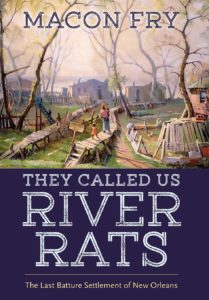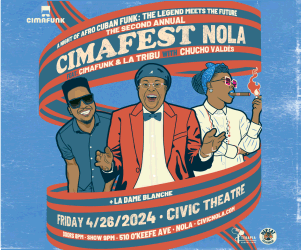 Be it the vastness of New Orleans East or the tiny sliver of the Mississippi River batture, very little has been written about the history of either community.
Be it the vastness of New Orleans East or the tiny sliver of the Mississippi River batture, very little has been written about the history of either community.
Thankfully, Macon Fry has now revealed to us the mystic wonders, history and politics surrounding the New Orleans batture.
For me, being a transplant, a marathon runner and an Uptown resident, the Mississippi River became a natural magnet. No two days on the river were alike. In spring, the river would rise nearly to the top of the levee. Weathered old men caught enormous catfish using cane poles weighted with spark plugs and baited with luncheon meat from Schwegmann’s. In summer, the shallows extended so far from the levee, it seemed as if you could wade through water no more than chest high while walking to Westwego. The one constant on the river was that strange clutch of rickety shacks built on stilts, the batture settlement on the Jefferson side of the parish line. It was, and remains to this day, a community and a lifestyle that exists in a time warp.
A 40-year resident and survivor of the batture settlement, Fry (a fellow transplant) details the good, bad, tough and humorous parts about living on the river. A challenge for sure, these so-called “river rats” are certainly of a different ilk than mere mortals. Fry also uncovers the fascinating histories of other batture communities, sharing fascinating first-person tales and information gleaned from old newspapers over the years.
All but forgotten in New Orleans history, nearly 200 families once lived a colorful and hard-working lifestyle on the other side of the levee at the foot of Henry Clay Street. Unfortunately, greedy politicians and industrialists had their homes bulldozed into the mud in the mid-1950s dispersing an entire community. In the late ’70s, one could still find vintage stove parts, doorknobs, dinner knives, spoons, and even a rusty Jax beer can in the shallows where the homes once stood. As late was 1973, a tiny batture community still existed just upstream from the riverfront stretch of Audubon Park known as the Fly.
They Called Us River Rats is very well written, painstakingly researched, and contains several excellent and educational illustrations. It’s the total package. One can only hope someone soon details the history of the camps that once lined Lake Pochartrain’s south shore from the Lakefront Airport to the derelict Lincoln Beach amusement park. Once you start reading this book, you won’t be able put it down.
To purchase The Called Us River Rats by Macon Fry, click here.




